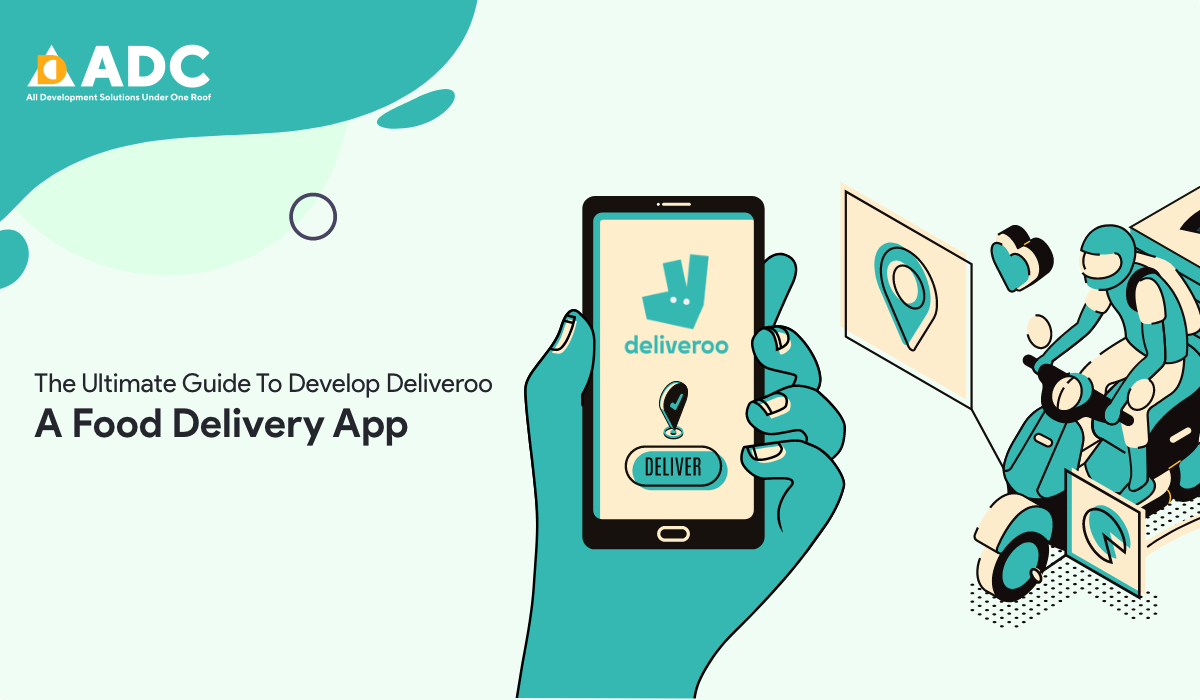Recent post
Subscribe to the Blog
Get our research-based blogs and stories delivered to your inbox.

Whether you’re the owner of a restaurant, looking to develop your own eatery app or invest in something like Deliveroo, one thing is for certain – you couldn’t time it better!
There’s nothing new about food delivery. There will always be that day when you just have to combine your beloved crime show with mouth-watering grub from your favourite restaurant. You may also feel like treating yourself with pizza on long and exhausting workdays. However, the COVID-19 outbreak changed food delivery forever.
There was a time not too long ago when online food delivery was popular among hungry introverts, lazy students, and tired professionals. At the end of the day, these people wanted prepared food on their tables ready for consumption. Today, food delivery has become a norm. About six months after the pandemic started, only a handful of restaurants started opening up in specific cities. Restaurant owners had to enforce strict social distancing measures too.
During times like these, one can’t help but order food from a zero-contact deliverer. It’s precisely what gave rise to mobile apps like Deliveroo, Uber Eats, Swiggy, Zomato, etc. According to market researchers trusted by world-renowned brands like Microsoft and IKEA, the worldwide online food delivery service market would grow from $107.44 billion in 2019 to $111.32 billion in 2020 at a growth rate of 3.61%. The growth rate reduced mostly because of the economic slowdown caused by the coronavirus and the measures taken to contain it. The same researchers have evidence to prove that the market will touch the $154 billion mark by 2023 at a CAGR of 11.51% and $200 billion by 2025.
Now, you want to build a food delivery application like Deliveroo. If you’ve been reading this write-up from the beginning, then you know how lucrative a food delivery business can be. So, without further ado, this topic will take you straight into the thick of things.
First of all, you need to understand the different business models followed by food delivery businesses. The aggregator model, for instance, is suitable for someone who wants to invest as little as possible into fixed assets. This model offers the technology required by all online delivery models.
Under this model, a single establishment builds its app so that it can deliver its food to customers exclusively. This model lets restaurant owners reach out to a wider audience and target those who can’t visit the restaurant physically.
This one is an augmented version of the aggregator model where a company provides a platform to stakeholders. It also handles the associated logistical requirements. Under this platform with a logistical support model, the parent company offers multiple choices via its digital platform, accepts customer orders, manages the delivery, and ensures the satisfaction of all involved parties.
If you’re going to build an app like Deliveroo, it should possess the same features, at least. Besides, online food delivery platforms have stakeholders to cater to, apart from customers. These stakeholders deal with patrons, restaurants, as well as delivery partners. When it comes to building food delivery platforms for mobile devices, you need to create separate interfaces to tend to the needs of the stakeholders. Here’s a breakdown of the must-have features.
Whenever someone uses a food delivery app, you can expect that person to be hungry. You should also remember that hunger is a feeling that can prevent the person from using a complicated application. Naturally, you have to make the ordering process as smooth as possible.
You can make the ordering process easy only if you make the payment procedure simple. Therefore, consider adding multiple online and offline payment options. You should also allow your customers to be eligible for rewards, such as discounts or promo codes if they pay you online.
One of the signs of a high-quality food delivery platform is an easy-to-use and intuitive sign-up process. It should be effortless. It also means you can’t ask for too many details when they register. You can do it only when they place an order.
Online deliveries usually have specific uncertainties. Users can’t pinpoint the location of the delivery person. Understandably, it falls to the company to ensure it provides ample information to every customer regarding the order they place. They also have to know about the preparation procedure and delivery time. Therefore, you must allow a customer to see the location of the delivery person and a chance to contact the individual if he/she needs to.
Ease of navigation is something every stakeholder wants. Customers need to see every available restaurant and differentiate them based on pricing, cuisines, locations, reviews, etc. You have to segregate food choices into categories so that every customer can navigate through them seamlessly.
If you can offer exceptional features, you’ll always be one step ahead of your competitors. That’s why you should consider adding a pickup option. Apart from receiving at-home deliveries, customers should get an opportunity to pick up the food from the restaurant directly.
Finally, you need a customer support team in place to solve the queries of every customer. It will help you handle complaints and issues instantly and reduce the chances of dealing with unsatisfied customers.
Apart from everything described above, you’ll need individual panels for the customers, the restaurants you partner with, and the admin.
Customers should get a chance to rate and review restaurants, as well as your delivery services. They must also get to track orders, integrate payments, and log in through social media accounts.
You have to allow restaurants to manage menus based on availability, provide an option to send push notifications, and give them appropriate and inclusive reports regarding demand and level of customer satisfaction.
Finally, the admin needs a platform to send notifications for various purposes. The admin also requires a platform to handle different panels, take care of surging prices, and receive payment reports.
There are several ways for you to use the app to earn profits.
The simplest method of earning via an aggregator app is to charge customers for providing them with food delivery.
You can charge commissions from restaurants you partner with. After all, your platform provides them a chance to showcase what they have to offer and reach a wider audience.
This option comes in handy only when the demand is too high and the company doesn’t have the necessary delivery personnel to handle the same. It informs the customers about the level of demand experienced by the restaurant. Naturally, to order food from that establishment, every customer has to pay more.
In the end, you may consider resorting to advertisements for monetization. Food delivery applications can prioritize restaurants and ensure customers see them instead of their competitors.
So, how much do you need to pay to develop an app like Deliveroo? Building one shouldn’t be a problem as you’ll find several app development agencies that already created such applications in the past. They have the necessary codes they need to rebuild what you need. They simply have to alter the interface and add or remove specific features depending on what you need. Based on the level of sophistication of the app, you have to spend somewhere between $30,000 and $50,000 to get what you seek. However, the prices quoted by development agencies tend to differ.
Now that you know everything you need to about getting an app like Deliveroo developed, you should start looking for service providers. Don’t forget to gauge each service provider before you choose one.
Get our research-based blogs and stories delivered to your inbox.
 Top Mobile App Development Firms
Top Mobile App Development Firms
 Top Web Development Firms
Top Web Development Firms
 Top On Demand App Developers Firms
Top On Demand App Developers Firms